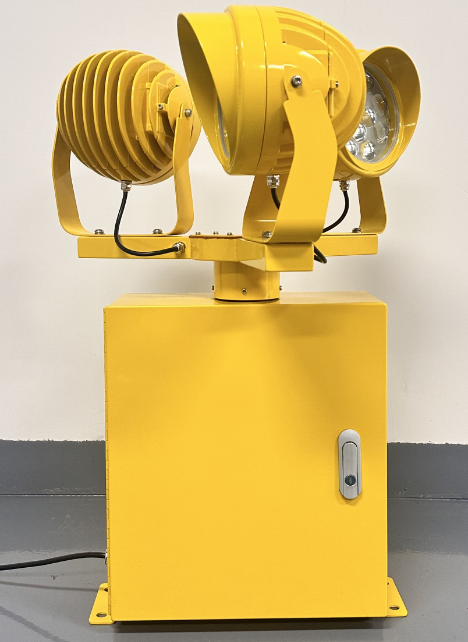In the complex ecosystem of aviation safety, few visual signals are as universally recognized as the aircraft rotating beacon. This distinctive flashing light serves as the heartbeat of aircraft visibility, providing critical visual cues that enhance safety on the ground and in the air. This article examines the essential role, technical specifications, and evolving technology behind these crucial safety devices.
The Fundamental Role of Aircraft Rotating Beacons
Aircraft rotating beacons perform three primary safety functions:

Ground operation awareness - alerting personnel to active aircraft movement
Engine status indication - signaling when engines are running or about to start
Collision prevention - enhancing aircraft visibility during low-light conditions
| Aircraft Rotating Beacons |
These beacons operate as part of a comprehensive aircraft lighting system, working in conjunction with navigation lights, strobes, and landing lights to ensure maximum visibility.
Technical Specifications and Standards
Modern aircraft rotating beacons adhere to strict regulatory requirements:
Light Characteristics
| Aircraft Rotating Beacon |
Typically produce red or white light
Flash rate between 40-100 cycles per minute
Minimum intensity of 400 candelas for small aircraft
Installation Requirements
Mounted on top and bottom of fuselage for maximum visibility
Required on all powered aircraft (with few exceptions)
Must be visible from all ground angles
Power Requirements
Standard 28V DC aircraft power systems
Current draw typically under 5 amps
Often include backup power connections
Evolution of Beacon Technology
The development of rotating beacons has progressed through several generations:
Incandescent Era (1940s-1980s)
Bulb-based systems with mechanical rotation
Limited lifespan (500-1,000 hours)
Vulnerable to vibration damage
Xenon Strobe Transition (1980s-2000s)
Higher intensity output
Reduced power consumption
Eliminated moving parts
LED Revolution (2000s-Present)
50,000+ hour lifespan
Instant full-intensity illumination
60% less power consumption
Solid-state reliability
Operational Protocols and Best Practices
Proper use of rotating beacons follows established aviation procedures:
Standard Operating Procedures
Activation before engine start
Continuous operation while engines are running
Deactivation after final engine shutdown
Maintenance Considerations
Regular lens cleaning
Electrical connection inspections
Vibration damage assessment
Troubleshooting Common Issues
Intermittent operation (check connections)
Dim output (verify power supply)
Complete failure (inspect bulb/LED array)
Specialized Applications
Beyond standard aircraft use, rotating beacons serve unique purposes:
Helicopter Operations
Increased flash rate for better visibility
Often combined with anti-collision systems
Special mounting for rotorcraft configurations
Unmanned Aerial Vehicles
Miniaturized beacon systems
Custom flash patterns
Integration with transponder systems
Ground Support Equipment
Vehicle-mounted warning systems
Distinctive amber beacons
Synchronized flash patterns
Future Developments
Emerging technologies promise to enhance beacon functionality:
Smart Beacon Systems
Automatic intensity adjustment
Weather-responsive operation
Built-in health monitoring
Enhanced Visibility Solutions
Multi-color warning systems
Combined visual/IR output
Synchronized fleet lighting
Sustainable Innovations
Solar-assisted operation
Energy harvesting systems
Eco-friendly materials
Regulatory Compliance
Aircraft rotating beacons must meet stringent certification standards:
FAA Requirements (Part 25 & 27)
Minimum intensity standards
Field of view specifications
Environmental testing
EASA Certification
Electromagnetic compatibility
Vibration resistance
Temperature tolerance
Industry Standards
RTCA DO-160 environmental testing
SAE AS8034 performance criteria
MIL-STD-810 durability standards
The aircraft rotating beacon remains an indispensable component of aviation safety, evolving from simple mechanical devices to sophisticated solid-state systems. As aviation technology advances, these beacons will continue to adapt, incorporating smarter features while maintaining their fundamental purpose: to warn, to alert, and to protect. Their distinctive pulse will remain a constant in the ever-changing landscape of aviation safety, serving as a visual reminder of the industry's unwavering commitment to accident prevention. Proper understanding, operation, and maintenance of these systems remains essential for all aviation professionals.